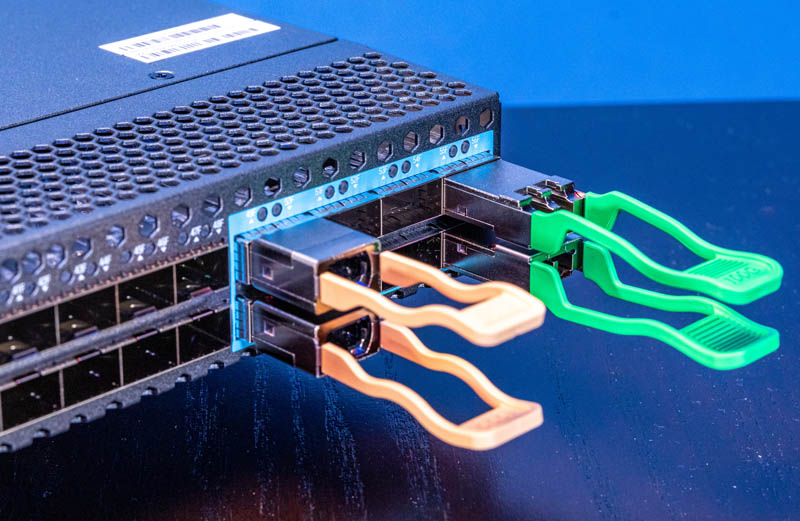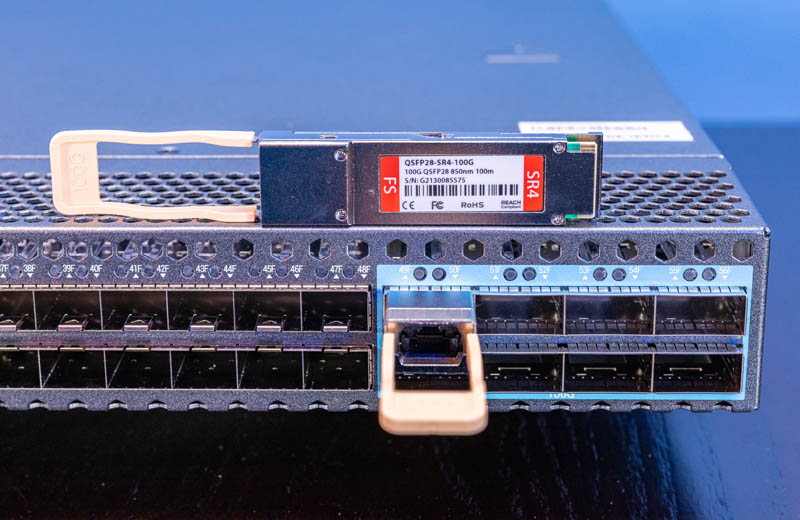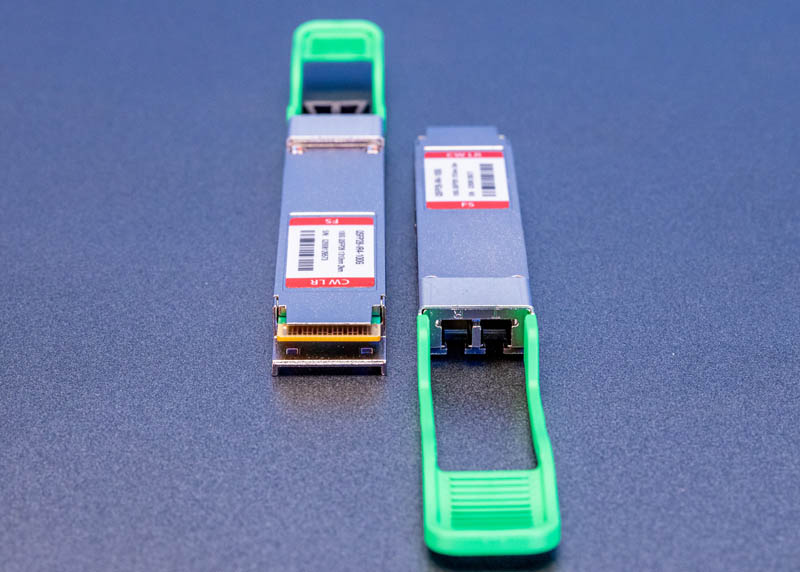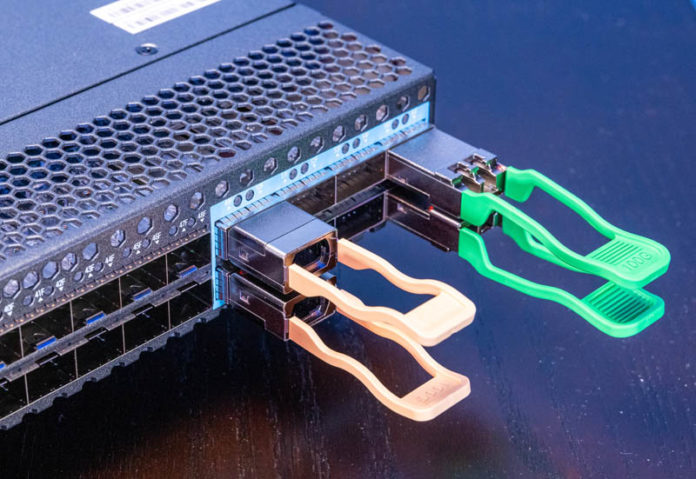Since this is a holiday week for many STH readers, we are catching up on some of the questions we had in the mailbag. One is what is the difference between the FS 100GbE modules that we used recently in our FS S5860-48SC Review 48x 10GbE SFP+ and 8x 100GbE SFP28 switch review. While to many network professionals, the difference between the modules will be apparent, it is not to everyone so we got a few questions on these and this is a week to catch up on them.
QSFP28-100G-SR4 v. QSFP28-100G-IR4 Differences
Here are the two QSFP28 modules in the switch. The QSFP28-100G-SR4 modules have the beige looking pull release tabs while the QSFP28-100G-IR4 have green tabs. QSFP28 decodes to quad small form-factor pluggable 28(Gbps). That means that there are effectively four channels that can each carry 28Gbps. while that may sound like they should be 112GbE, but conceptually you can this of this as there is room for overhead so this is 100GbE.

The QSFP28-SR4-100G modules are going to be what many people see often with 100GbE optics. SR4 is common with many installations because it is relatively low power and uses OM3/OM4 multi-mode fiber. The catch is that it uses MPO/MTP cabling taking advantage of four pairs or eight fibers. For those with MTP-12 fiber runs, for example, this means that only eight of the twelve cables will be utilized. One benefit is that one can potentially use these four pairs for 4x 25GbE breakouts to multiple downstream systems. MTP-12 is more costly per meter than two fiber LC runs because there is more fiber. The maximum range of these optics is 100m using OM4 MM fiber but they use under 2W of power.

The QSFP28-IR4-100G modules are quite a bit different. These are CWDM (coarse wave division multiplexing) modules that use single-mode fiber (SMF.) Unlike the SR4 modules, these use two fiber LC cables for connectivity and multiplex four wavelengths (1271nm, 1291nm, 1311nm, and 1331nm) for four channels over the same physical strand of fiber in each direction. The benefit of this configuration with SMF is that the runs can span up to 2km. One can also use cassettes to put up to six of these connections over a single-mode MPO/MTP-12 cable. While the IR4’s use fewer fiber strands, and can span longer distances, they use roughly twice the power of the SR4’s.

These CWDM modules we saw more of in the 100G generation as a bridge between the common SR4 modules at up to 100m and the LR4 modules at up to 10km.
Final Words
We hope that helps explain the differences between the two types of modules. One of the advantages of pluggable modules, over co-packaged optics, is that one can use different optics or DACs as needed based on the distances required and fiber available. The SR4 and IR4 are actually quite different even though they are both used in QSFP28 cages.





The green tab IR4 100G were a game changer for datacenter use for us. MPO cabling has been problematic; much higher cost, less availability so harder to keep inventory, and higher fail rate. Plus every new generation of Ethernet required ripping out and replacing all the MMF based cable plant for the next iteration of OM standard. The green tab allow for affordable SMF LC duplex usage on 100G. Having a single cable type option for 10/25/100G was huge.
But at what cost really? At more than 6x the price of SR4, it won’t be going anywhere anytime soon. The module savings far outweigh the cabling savings.
But for end point connectivity, that’s another story and YMMV.
2x the cost here. $189 vs $99 each.
$250-300 depending on length for one link of SR4 and about $390 for CWDM4. Overall the cost is more but not significantly so.
Endpoint for us, where you need boxes of cables in various lengths in stock and ready to use.
What brand modules are you using?
FS. Same part numbers in story above.
Ahh. FS needs to do a slightly better job here with their descriptions.
QSFP-100G-4WDM-S
vs
QSFP-100G-CWDM4-S
I’d initially looked at the former.